| |
In Pictures: Learning mountain flora and fauna at Highlands, North Carolina
By Tom Adkinson
May 31, 2024

|
HIGHLANDS, N.C. – The small mountain town of Highlands is a high-elevation retreat often packed to overflowing with vacationers attracted by shopping and dining opportunities, but visitors who have come for a real mountain experience find their fulfillment just a few hundred yards from the center of town.
Their destination is the Highlands Nature Center, a free facility laced with gentle paths that lead through multiple plant environments and various animal habitats. It provides a snapshot of the southern Appalachian Mountains, one of the most biologically diverse regions in the world. The region sustains thousands of species – 100 native trees, 1,400 flowering plants, 500 mosses and ferns, 460 arachnids, 230 millipedes, more than 100 mollusks (primarily land snails) and more salamander species than anywhere else in the world.
Not all those species are at the Highland Nature Center, but this quiet retreat offers a wide range – and most are labeled for easy identification. Courses, workshops and guided tours open the doors to learning more.
Home base for a mountain stroll
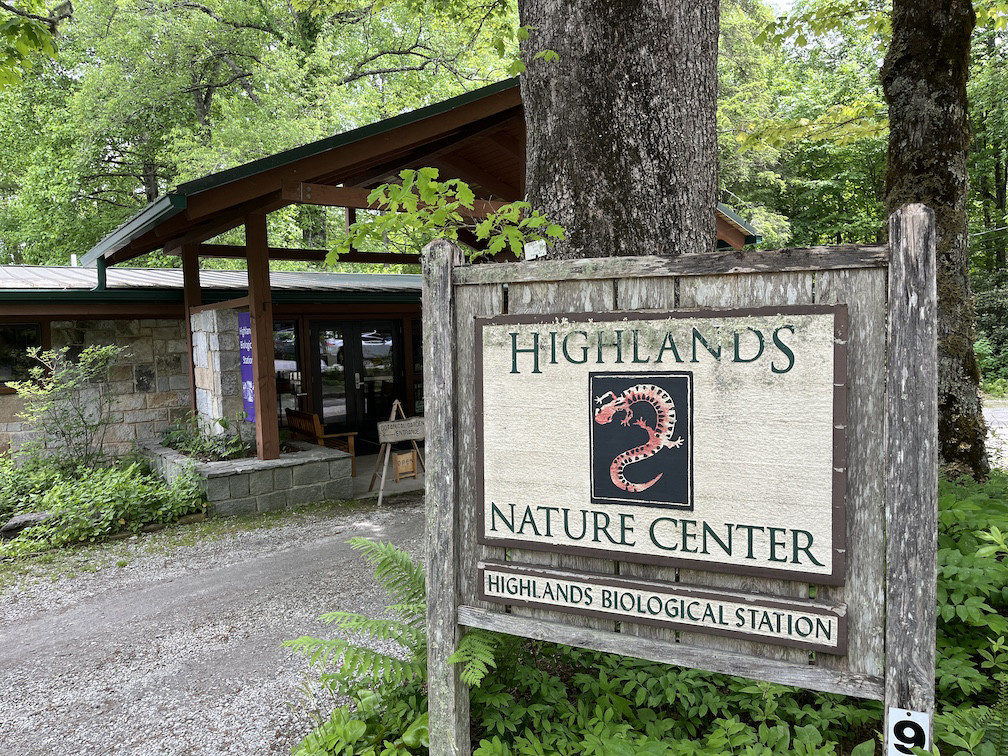
The Highlands Nature Center is a quiet oasis just a few hundred yards from the bustle of a mountain resort town. Its primary building houses a variety of displays and two popular rat snakes named Jack and Jill. Image by Tom Adkinson
|
|
No getting lost
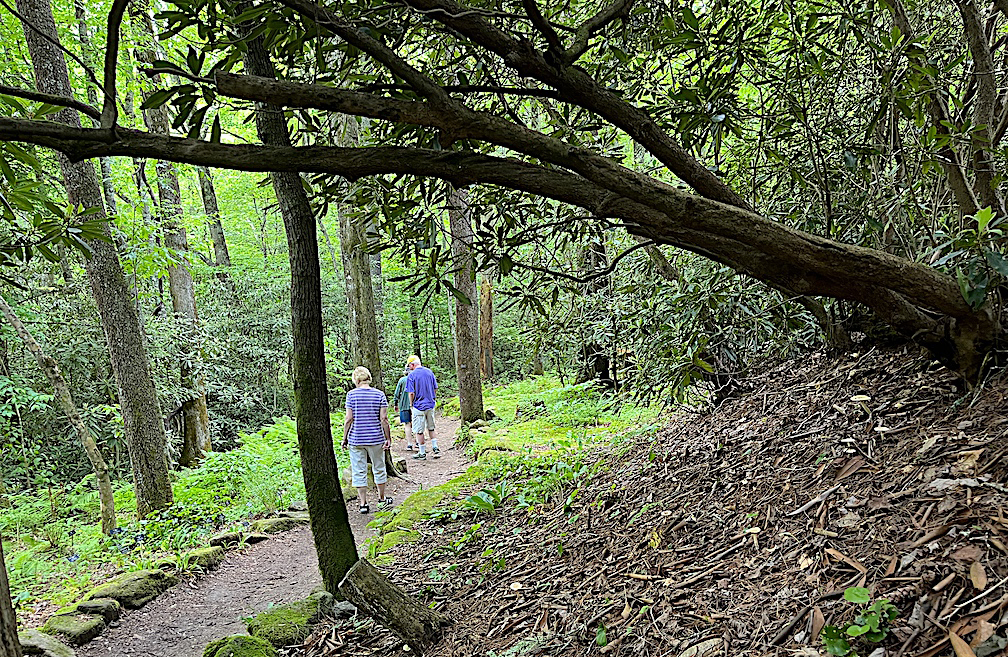
Paths through the Highlands Nature Center are easy to follow and flow from one habitat to another. The most serene are under a canopy of mountain hardwoods. Image by Tom Adkinson
|
A non-native rhododendron
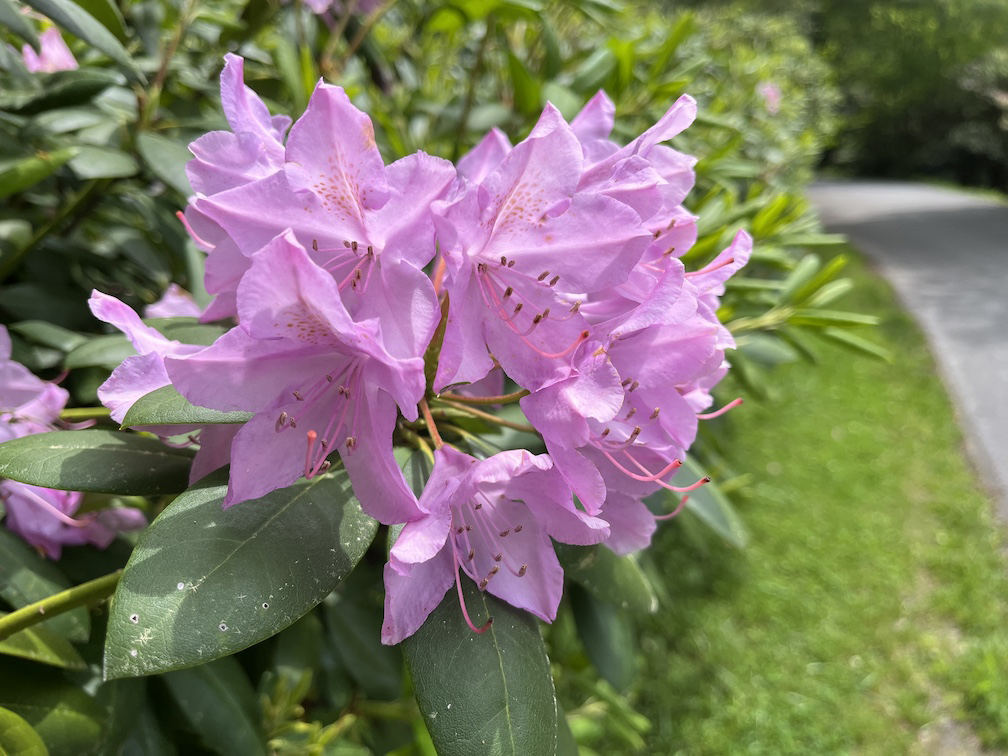
The native ancestors of this showy rhododendron were slightly more subdued than this colorful cultivar along a roadside at the Highlands Nature Center. Image by Tom Adkinson
|
A lesson in pollination
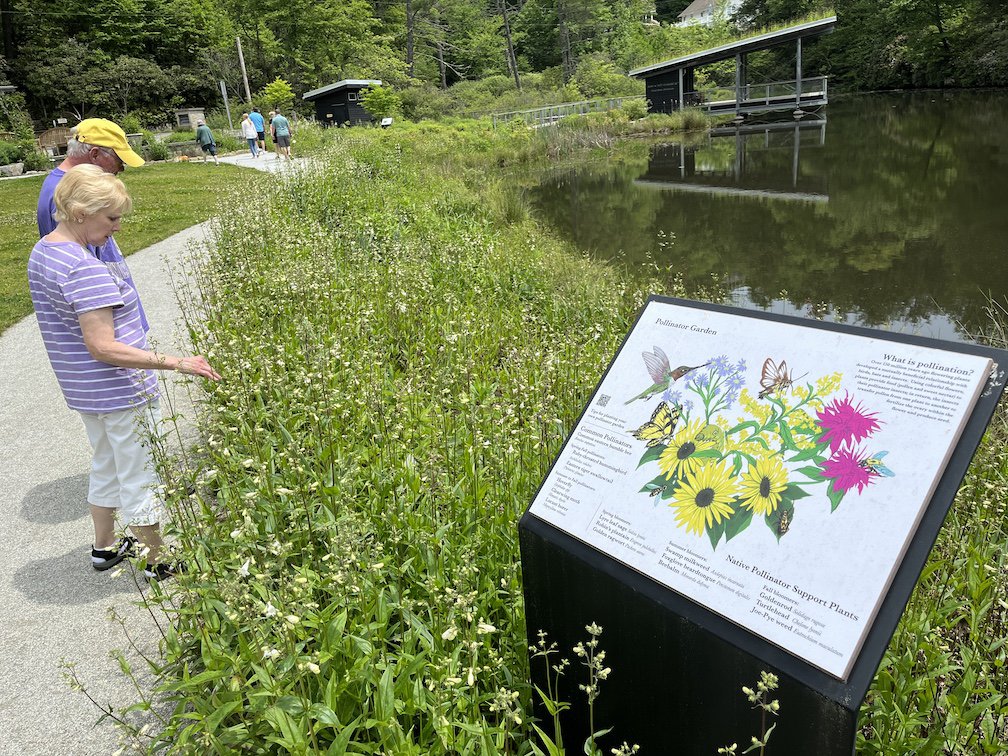
Visitors to a pollinator garden at the Highlands Nature Center admire the various wildflowers and look for hummingbirds, bees and butterflies that play their roles in the pollination process. Image by Tom Adkinson
|
|
It’s pretty, but carnivorous
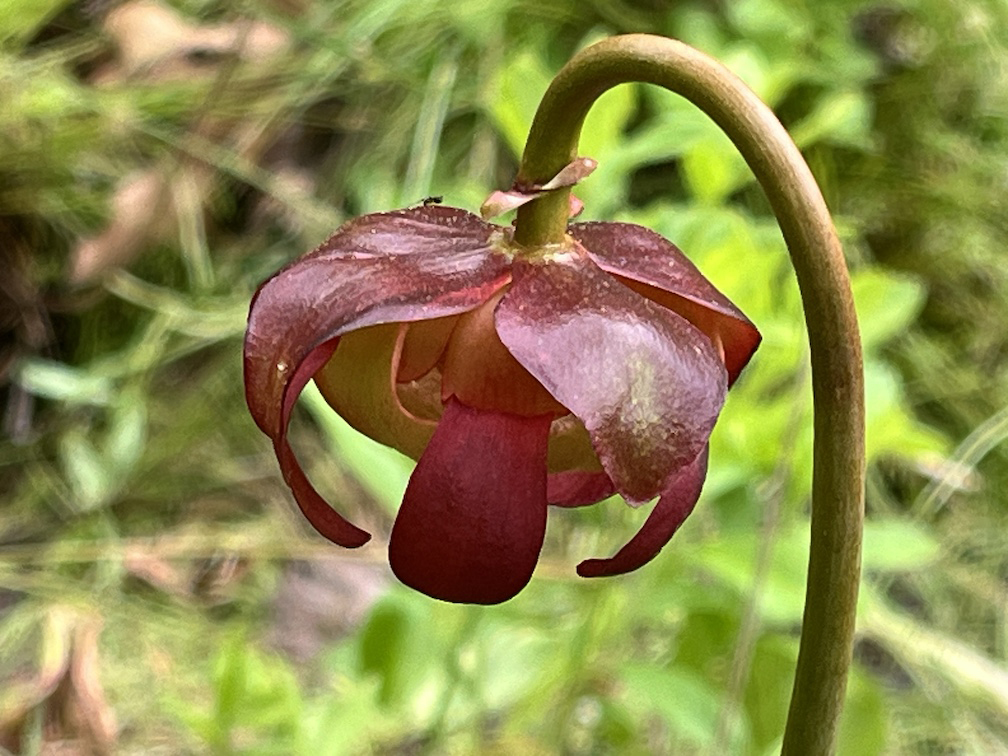
Purple pitcher plants (Sarracenia purpurea) produce a dumpling-shaped flower. The mature plants, prominent in a boggy area of the nature center, are carnivorous. Spiders and insects are their usual victims, but salamanders sometimes are on the menu. Image by Tom Adkinson
|
A hemlock’s history
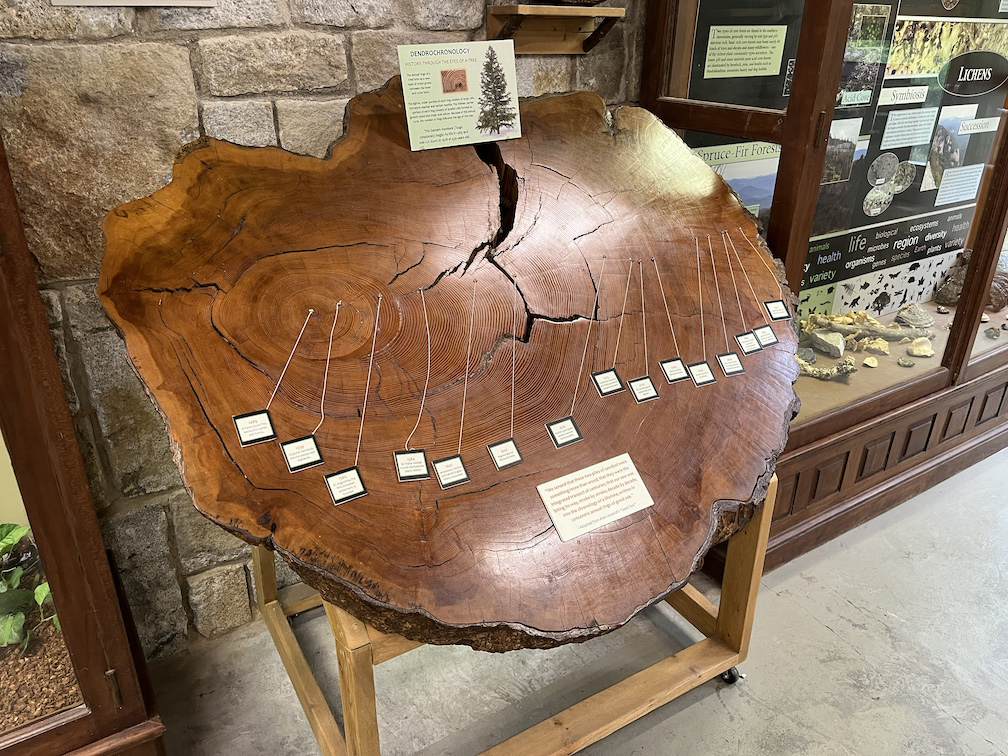
A slice of a hemlock tree that is almost six feet in diameter traces history from its sprouting in 1489, through DeSoto’s expedition in 1539, through the Pilgrims’ arrival in 1620 and well past the early surveys of Highlands in 1875. Image by Tom Adkinson
|
Stating the obvious

One has to wonder what episode prompted the posting of this sign near the nature center’s pond.. Image by Tom Adkinson
|
Trip-planning resources: HighlandsBiological.org, HighlandsChamber.org and VisitNC.com
(Travel writer Tom Adkinson’s book, 100 Things To Do in Nashville Before You Die, is available on Amazon.com. |

